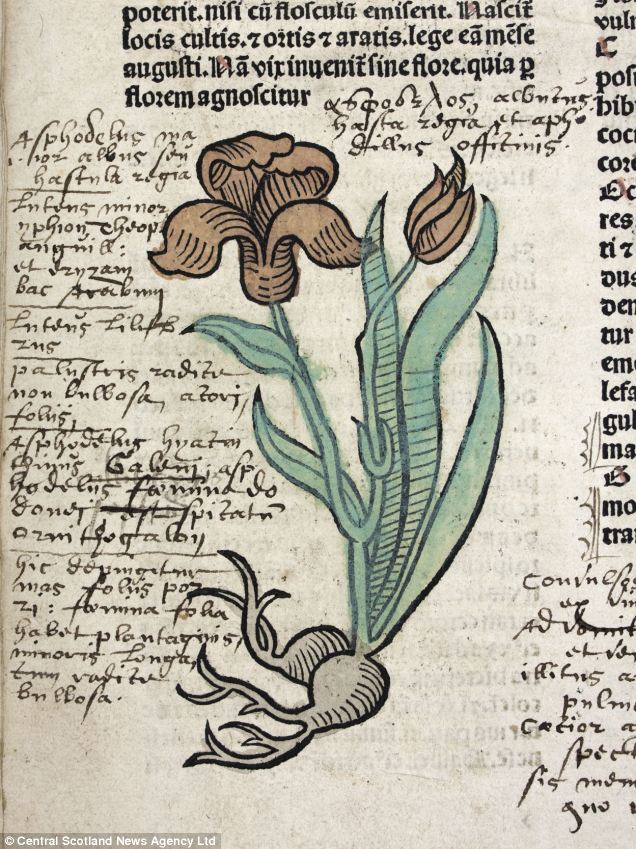Newsreel
This week I’ve got a pretty interesting selection here. A medieval medical manuscript that’s an odd mix of science and folklore, research on the criminal profiling done by the vikings, and…There was something else. Oh yes, archaeologists may have actually found the bones of Richard III. This is a really big deal.
A Richard!
Two weeks ago, you read here about how archaeologists are digging up a Leicester parking lot which holds the remains of Greyfriar’s Abbey, where King Richard III, last of the Plantagenets, was buried after the Battle of Bosworth. Well, in just that time, the dig has uncovered a set of bones with spinal irregularities and a skull which could have belonged to the king himself. The skeleton bears a lot of the hallmarks that the king is described with, such as a kind of scoliosis that would have hunched his spine, and a fatal wound from a barbed iron arrow. They’re not certain yet, the tests are still underway, but the head of Leicester University’s School of Archaeology, Professor Lin Foxhall, is quoted as saying “Archaeology almost never finds named individuals – this is absolutely extraordinary.”
She’s not wrong, either. We find tombs, we find suspected burial places, and once in a while we find a name but learn the story from inside the tomb, like with Tutankhamen. But to go looking for a tomb and a name and find it? That’s rare. Blindfolded hole-in-one rare. The tests will take approximately twelve weeks, so if we’re good, we might get a king for Christmas. If it’s not him, then there’s an even deeper question. Who was that person, and why do they seem to resemble Richard so much? Archaeology, awesome even when things aren’t working out. Read the full article and watch a brief release at the BBC.
Folk Remedies
Do you use honey to get rid of headlice? How about comparing the colour of your urine with the movements of the stars? Well, five hundred years ago, it was the thing to do. De Hortatis Sanitatis (The Garden of Health) is a five hundred year old medical text on display for the first time ever in the University of Aberdeen’s new exhibit, “Pharmacopoeia”. It’s full of full colour pictures, analyses of plants, and illustrations of various remedies that would have been used back then. One of the most influential herbals of its time, the Hortatis contains a mix of folklore and science, dabbling in experimental methods while also incorporating ideas from myth and legend. Here’s just one of the images from this gorgeous manuscript. Read more about the Hortatis and the exhibit at the Daily Mail.

CSI: Fjords
Also from the University of Aberdeen, Dr. Tarrin Wills gave a presentation this week on how Icelandic literature tends to pick out indications of high testosterone, including details on forehead width, hairline, and heaviness of eyebrows. None of these, he notes, show anything about status or importance to the plot, as one might expect authors to focus on. Dr Wills says that,
“In this sense they were perhaps the first to begin criminal profiling. These early Viking authors pinpointed the physical markers of testosterone, including them in descriptions of great warriors, but this text was not created so much as a record of achievement in battle, but to address what was seen as the problem at home. As a result they served as ‘mugshots’ of likely offenders and a warning to wider Viking society.”
Given that many of the texts were written for wealthy farmers, rather than great warleaders, it does seem to follow that they would have a pretty big interest in spotting potential troublemakers. Read the full article at the Heritage Daily.
That’s it for Newsreel this week. Hope you had a great first week of classes, and I’ll see you next week!
Jim Tigwell is a freelance writer with an MA in Philosophy and a BA in the same, with a minor in Classical Studies. The creator of Concept Crucible, a blog focusing on applying philosophy to everyday life, he also writes about games, classics, and social media. Find him on Twitter as @ConceptCrucible.
